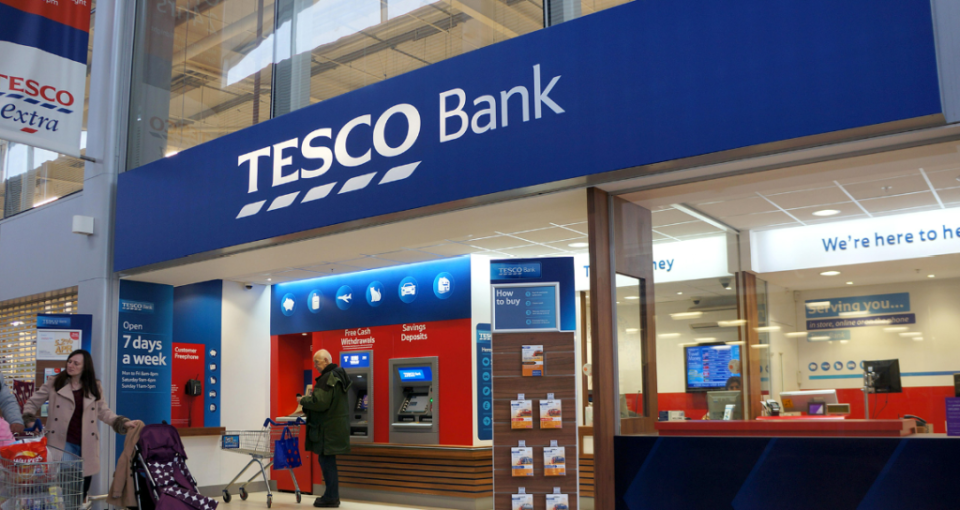In the bustling landscape of retail, few names resonate with as much significance and longevity as Tesco. From its humble beginnings as a market stall in the East End of London to its status as one of the world’s largest retailers, Tesco’s journey is a testament to innovation, resilience, and adaptability.
Founding Years (1919-1940s): Tesco’s origins trace back to 1919 when Jack Cohen, the son of Polish Jewish immigrants, started selling surplus groceries from a stall in the East End’s bustling markets. With a keen entrepreneurial spirit, Cohen seized opportunities, buying surplus stocks from suppliers and selling them at discounted prices. His motto, “Pile it high, sell it cheap,” became the cornerstone of Tesco’s business philosophy.
Expansion and Innovation (1950s-1970s): The 1950s marked a period of expansion for Tesco, as the company opened its first self-service supermarket in 1956 in St Albans, Hertfordshire. This move revolutionized the grocery shopping experience, allowing customers to browse and select products themselves—a concept that quickly gained popularity.
In the following decades, Tesco continued to innovate, introducing various initiatives to enhance customer convenience. The 1970s saw the launch of Tesco Value, a range of budget-friendly products aimed at cost-conscious consumers. This was a pivotal moment, as Tesco demonstrated its ability to cater to diverse customer segments while maintaining its commitment to affordability.
Rise to Prominence (1980s-1990s): The 1980s and 1990s marked a period of significant growth and diversification for Tesco. Under the leadership of Sir Terry Leahy, who became CEO in 1997, the company embarked on an ambitious expansion strategy, acquiring rival chains and diversifying its product offerings.
Tesco’s foray into non-food retail, with ventures such as Tesco Personal Finance and Tesco Mobile, further solidified its position as a retail powerhouse. The company’s commitment to innovation was evident in its embrace of technology, including the introduction of the Clubcard loyalty program in 1995, which revolutionized customer data analytics and personalized marketing.
Global Expansion (2000s-2010s): The new millennium brought further international expansion for Tesco, with ventures into markets such as Asia, Europe, and the United States. However, this period also presented challenges, including economic downturns and increased competition.
In response, Tesco focused on strengthening its core operations, streamlining its business model, and enhancing its online presence. The launch of Tesco.com in 2000 marked the company’s entry into e-commerce, a move that would prove prescient in the years to come.
Adapting to Changing Trends (2010s-Present): The latter half of the 2010s saw Tesco navigating a rapidly evolving retail landscape, characterized by shifting consumer preferences and the rise of online shopping. In response, the company embarked on a series of strategic initiatives aimed at revitalizing its brand and enhancing the customer experience.
This included the acquisition of Booker Group, a wholesale supplier, in 2018, further diversifying Tesco’s business and strengthening its position in the food retail market. Additionally, Tesco invested in store refurbishments, technology upgrades, and sustainability initiatives, aligning its operations with changing societal values and environmental concerns.
Conclusion: As Tesco approaches its centenary, its journey from a humble market stall to a global retail powerhouse is a testament to its ability to adapt, innovate, and evolve. While the retail landscape continues to undergo profound transformations, Tesco remains at the forefront, guided by its commitment to quality, value, and customer satisfaction. With a rich history of resilience and success, Tesco’s legacy is sure to endure for generations to come.
Sir Terry Leahy’s Leadership Legacy: Transforming Tesco into a Global Retail Powerhouse
Sir Terry Leahy’s tenure as CEO of Tesco marks a defining chapter in the company’s history—one characterized by bold vision, strategic foresight, and transformative leadership. Under Leahy’s guidance, Tesco evolved from a British supermarket chain into a global retail giant, revolutionizing the industry along the way.
A Visionary Leader: Leahy joined Tesco as a marketing executive in 1979, rising through the ranks to become CEO in 1997. His tenure at the helm spanned 14 years, during which he implemented a series of innovative strategies that propelled Tesco to unprecedented heights.
Customer-Centric Approach: Central to Leahy’s leadership philosophy was a relentless focus on the customer. He understood that success in the retail industry hinged on anticipating and meeting the evolving needs of consumers. Under his guidance, Tesco invested heavily in market research and customer analytics, gaining invaluable insights into consumer behavior and preferences.
Innovative Strategies: Leahy’s tenure was marked by a series of bold initiatives that reshaped the retail landscape. One of his most significant contributions was the introduction of the Clubcard loyalty program in 1995. By leveraging data analytics, Tesco was able to personalize marketing efforts, enhance customer loyalty, and gain a competitive edge.
Additionally, Leahy spearheaded Tesco’s expansion into non-food retail sectors, including financial services and telecommunications. Ventures such as Tesco Personal Finance and Tesco Mobile not only diversified the company’s revenue streams but also reinforced its position as a one-stop destination for consumer needs.
Global Expansion: Under Leahy’s leadership, Tesco embarked on a rapid international expansion strategy, entering markets across Asia, Europe, and the United States. This global footprint solidified Tesco’s status as a leading player in the retail industry, offering economies of scale and strategic advantages in sourcing and distribution.
Legacy of Innovation: Beyond his tenure as CEO, Leahy’s legacy at Tesco endures through his commitment to innovation and continuous improvement. His emphasis on operational efficiency, supply chain optimization, and technology integration set the stage for Tesco’s sustained success in a rapidly evolving marketplace.



